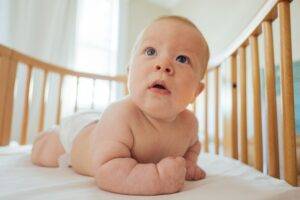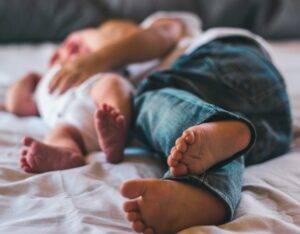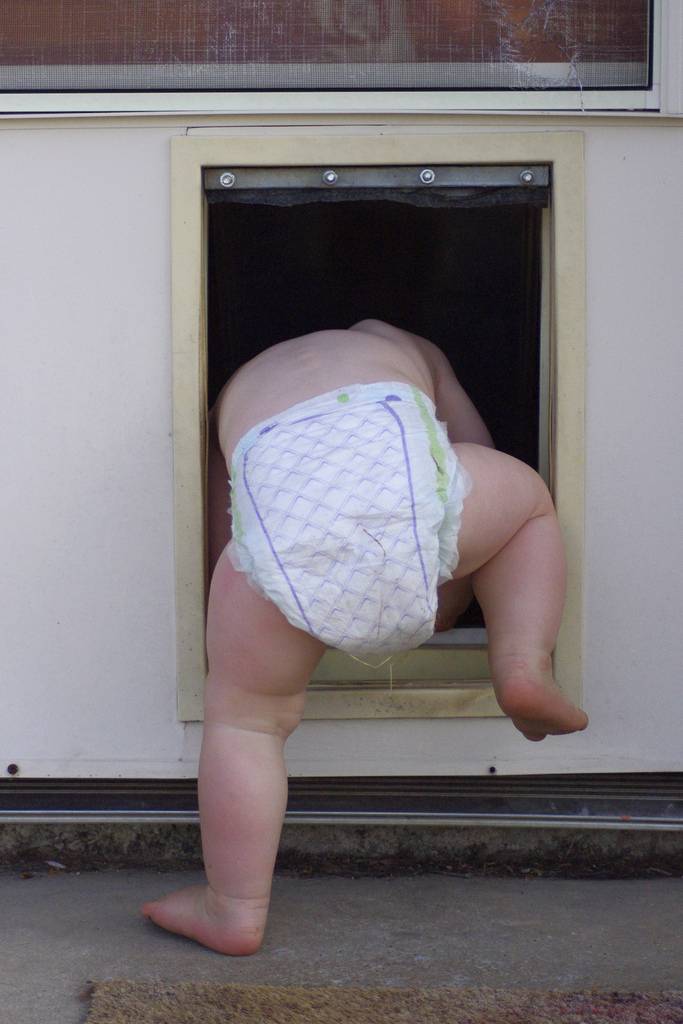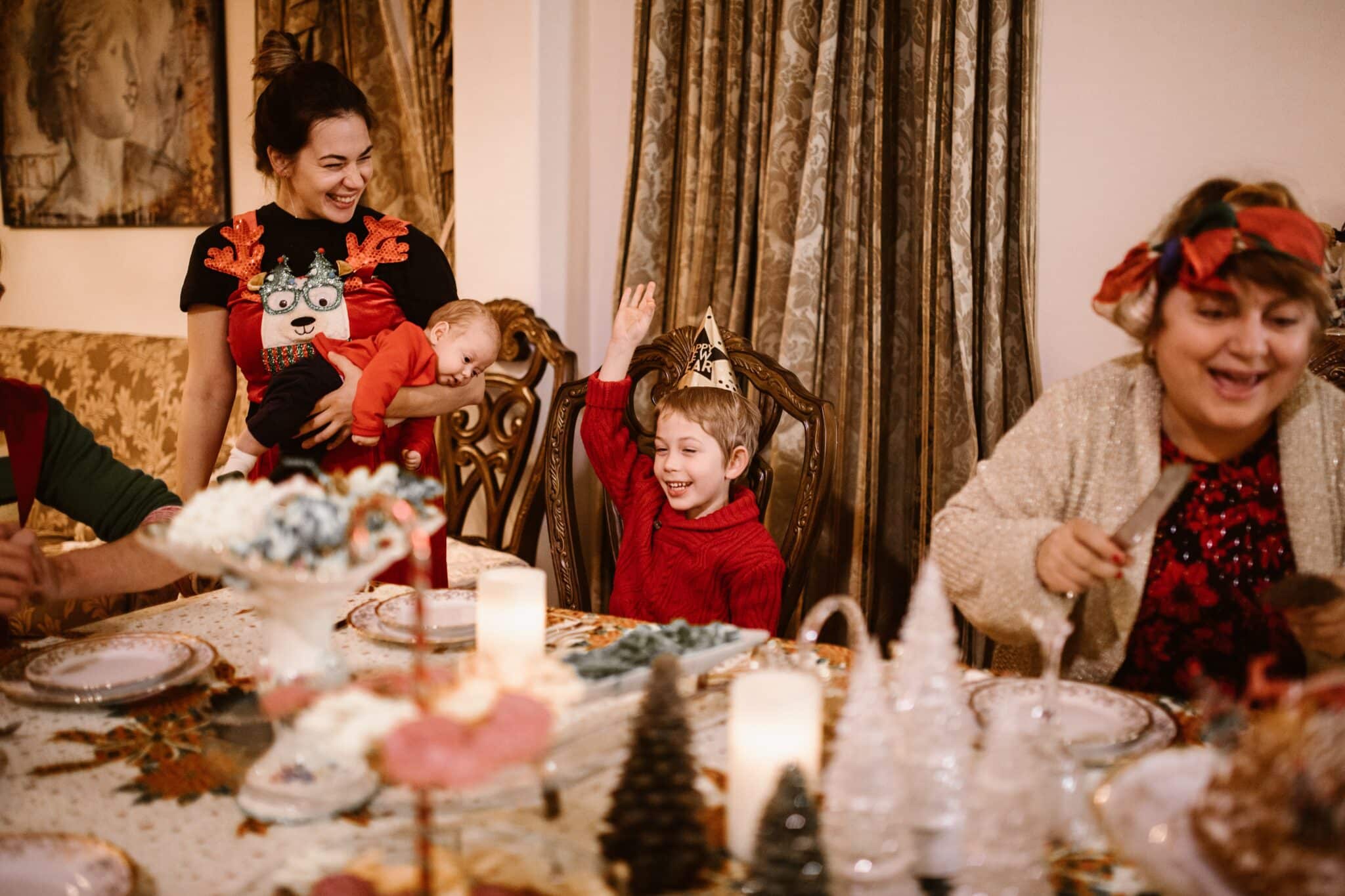Bringing a new baby into your home is one of life’s most joyous events. The baby’s arrival introduces new challenges and responsibilities. One of the most crucial steps in preparing for your little one is baby-proofing your home.
This post will walk you through the process of baby-proofing—room by room—to make your home a haven for your curious and adventurous baby.
Living Room
The living room is the home’s central hub, making it a critical area to baby-proof.
Furniture and Décor
- Anchor Furniture: Secure heavy or bulky furniture to the wall. Babies try to pull themselves up using the furniture; hence, these easily tip over if not fastened to the wall.
- Edge and Corner Guards: Install edge and corner guards on coffee tables, TV stands, and other furniture with sharp edges to protect your baby from bumps and bruises.
- Stabilize Lamps: Place heavy lamps and other decorative items out of reach or use adhesive strips to secure them. Some moms, though, forego these types of home decor until their children are grown-ups.
Electronics
4. Cover Outlets: Use outlet covers on all electrical outlets.
5. Manage Cords: Use cord management solutions to keep electrical cords tidy and out of reach. Consider using cord shorteners or cable covers.
Floors
6. Non-slip Rugs: Ensure rugs and carpets are non-slip or have non-slip pads underneath to prevent tripping.
7. Remove Small Objects: Regularly inspect the floor for small objects like coins, buttons, or toys with loose parts that could pose a choking hazard.
Kitchen
The kitchen is full of potential hazards, from hot stoves to sharp utensils. Extra precautions are necessary here to be baby-proof.
Cabinets and Drawers
8. Cabinet Locks: Install childproof locks on lower cabinets and drawers to keep little hands away from harmful substances and sharp objects.
9. Dangerous Items: Store sharp objects, cleaning supplies, and other hazardous materials in upper cabinets or locked drawers.
Appliances
10. Stove Safety: Use stove knob covers to prevent your child from turning on the burners. Consider using a stove guard to keep little hands away from hot surfaces.
11. Refrigerator Locks: Use a refrigerator lock to prevent your child from opening the fridge and getting into potentially dangerous items.
12. Microwave: Place the microwave out of reach or use a microwave lock.
General Tips
13. Trash Can: Use a trash can with a secure lid or place it inside a locked cabinet.
14. High Chair Safety: Always use the safety straps on the high chair, and never leave your child unattended.
Bathroom
The bathroom poses several risks, including drowning hazards and exposure to chemicals. Here’s how to keep it safe and baby-proof:
Water Safety
15. Toilet Locks: Install a toilet lock to prevent your child from opening the lid.
16. Bathtub Safety: Never leave your child unattended in the bath. Use a non-slip mat in the bathtub and consider a faucet cover to protect from bumps and burns.
Storage
17. Medications and Cleaners: Store all medicines, cleaning supplies, and personal care items in locked cabinets or out of reach.
18. Electrical Appliances: Keep hairdryers, razors, and other electrical appliances unplugged and stored away when not in use.
General Tips
19. Bathroom Doors: Keep bathroom doors closed when not in use, and consider installing a door lock or cover on the outside to prevent your child from entering unsupervised.
Nursery
The nursery should be a safe and soothing environment for your baby. Here are some key points to consider:
Crib Safety
20. Crib Standards: Ensure the crib meets safety standards. The slats should be no more than 2 3/8 inches apart to prevent your baby’s head from getting stuck.
21. Bedding: Use a firm mattress with a fitted sheet. Avoid using pillows, blankets, and stuffed animals in the crib to reduce the risk of suffocation.
22. Positioning: Place the crib away from windows, blinds, and any objects that your baby could reach from the crib.
Changing Table
23. Safety Straps: Always use the safety straps on the changing table and never leave your baby unattended.
24. Storage: Keep all diapering supplies within reach but out of your baby’s reach. Consider using a wall-mounted shelf or a diaper caddy.
General Tips
25. Toy Safety: Ensure all toys are age-appropriate and free of small parts that could be choking hazards.
26. Furniture Anchors: Secure dressers and other heavy furniture to the wall to prevent tipping.
Bedroom
Your bedroom can also pose various hazards, especially if your baby spends time there.
Bed Safety
27. Co-sleeping: If you choose to co-sleep, follow safe co-sleeping guidelines to reduce the risk of suffocation and SIDS.
28. Bed Rails: Use bed rails if your child transitions to toddler beds.
General Tips
29. Jewelry and Small Items: Keep jewelry, coins, and other small items out of reach and safely locked.
30. Blades and Other Sharp Objects: Ensure all these items are out of reach of children. Better still, don’t leave these items atop tables and dressers.
31. Dressers and Furniture: As with other rooms, anchor all furniture to the wall to prevent tipping. Secure your creams, makeup, medicines, and similar items out of reach, or lock them inside drawers.
Stairs and Hallways
These are some of the home’s high-traffic areas, hence, they’re regularly checked for your child’s safety.
Stairs
32. Safety Gates: Install safety gates at the top and bottom of the stairs. These should be securely mounted and can’t be easily dislodged.
33. Clutter-Free: The stairs should be free from toys and other items that might have been left behind. Also, check that there are no spills or slippery items. Wipe dry immediately.
34. Handrails: These should be secure. Consider adding a second lower handrail that’s easier for toddlers to reach for support.
Hallways
35. Lighting: Hallways should always be well-lit to prevent trips and falls.
36. Door Safety: Use door knob covers or locks on doors leading to potentially dangerous areas, like the kitchen, bathroom, basement,t or garage.
Outdoor Areas
Yard
37. Fencing: Ensure your yard is fully fenced and that gates have childproof latches.
38. Pool Safety: If you have a pool, install a pool fence with a self-latching gate. Always supervise your child around water.
39. Play Equipment: All play equipment is age-appropriate and in good condition. Install soft surfaces like rubber mats under play structures to cushion falls.
Garage
40. Chemical Storage: Store all chemicals, tools, and other hazardous materials out of reach or in locked cabinets.
41. Vehicle Safety: Check that your child is not behind or near your vehicle before starting the engine. Install a rearview camera if your car doesn’t have one.
Why is Baby-Proofing Important?
Babies are naturally curious and love to explore their surroundings. As they grow and develop, they will start crawling, walking, and reaching for things that catch their attention. This innate curiosity, while wonderful for their development, exposes them to various hazards.
Baby-proofing is crucial in preparing your home for your baby’s arrival and growth. Prevent accidents and injuries, giving you peace of mind as your child explores their environment. Here are the reasons to baby-proof your home:
Preventing Accidents and Injuries
Curiosity drives babies to interact with their environment in unexpected ways. Common household items and furniture that seem harmless to adults are potential dangers for babies. For instance, a crawling baby might be attracted to electrical outlets, dangling cords, or small objects on the floor.
These everyday items pose significant risks, such as electrical shocks, strangulation, and choking. By baby-proofing, you eliminate these hazards and create a safer environment for your child to explore.
Encouraging Safe Exploration
A baby-proofed home allows your child to explore freely without constant intervention from caregivers. When your home is secured, your baby develops motor skills, independence, and confidence in a safe setting.
Safe exploration is crucial for their cognitive and physical development, helping them learn about their surroundings through hands-on experiences.
Reducing Parental Anxiety
Knowing that your home is baby-proofed reduces stress and anxiety for parents and caregivers. Constantly worrying about potential dangers is overwhelming, especially for new parents.
By taking proactive measures to baby-proof your home, you enjoy relaxed and positive interactions with your child, knowing they’re protected from household hazards.
Peace of Mind for Caregivers
Parents aren’t the only ones who benefit from a baby-proofed home. Other caregivers, such as grandparents, babysitters, and daycare providers, also experience peace of mind when the home environment is secure.
This consistency in safety practices ensures that your baby is protected no matter who is watching them, creating a reliable and secure setting for their growth and development.
Baby-Proof Your Home for Everyone’s Safety
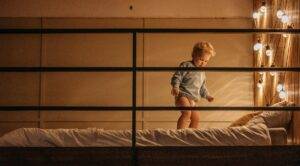
Baby-proofing your home is a continuous process. As your child grows and their abilities change, the same holds true for potential hazards. Regularly reassess your home for dangers and adjust your baby-proofing measures accordingly.
The goal is not to eliminate all risks but to create a safe environment that allows your child to explore and grow with minimal danger. Through this helpful guide, you’ll be well on your way to creating a secure, nurturing space for your little one. Enjoy this precious time, knowing you’ve taken the necessary steps to protect your child.

